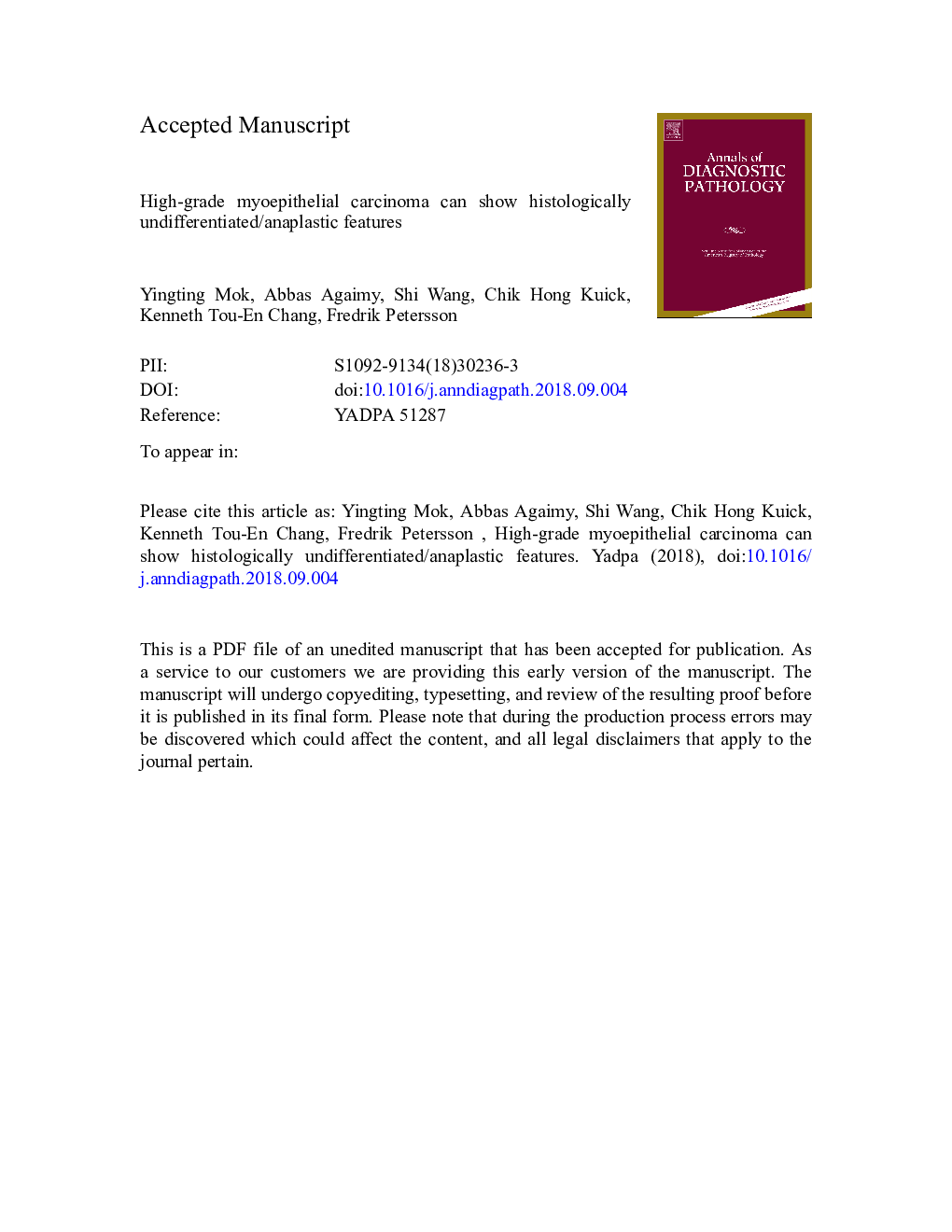| Article ID | Journal | Published Year | Pages | File Type |
|---|---|---|---|---|
| 10143998 | Annals of Diagnostic Pathology | 2018 | 18 Pages |
Abstract
High grade malignant tumors with a poorly-/un-differentiated morphology pose significant diagnostic challenges. Increasingly, the use of adjunct immunohistochemical and molecular tests to characterize and delineate the histopathologic phenotype of these tumors has become necessary, particularly in head and neck tumors. Recently, several entities with a poorly-/un-differentiated light microscopic morphology have been defined based on specific immunohistochemical and genetic characteristics. We herein describe two cases of high-grade myoepithelial carcinoma, one occurring in the submandibular gland and the other occurring in the left nasal cavity, both showing undifferentiated histological and anaplastic cytomorphological features. This led to very broad differential diagnostic considerations and the diagnosis was only established after extensive immunohistochemical studies. Molecular testing for HPV was negative in both cases. Gene fusion analysis using a targeted sequencing assay (Archer® FusionPlex® system) did not identify fusions involving PLAG1, HMGA2, EWSR1 or ALK genes in either case. The submandibular tumor showed an aggressive clinical course, with diffuse pulmonary metastases at presentation, whilst the nasal cavity tumor showed only localized disease. Awareness of a subcategory of high-grade myoepithelial carcinomas with undifferentiated light microscopical features is of significant importance in antibody selection for immunohistochemical investigation of poorly-/undifferentiated malignant tumors in the head and neck region. This histological variant of myoepithelial carcinoma adds to the growing list of differential diagnoses in this diagnostically complex and multifaceted field.
Keywords
Related Topics
Health Sciences
Medicine and Dentistry
Pathology and Medical Technology
Authors
Yingting Mok, Abbas Agaimy, Shi Wang, Chik Hong Kuick, Kenneth Tou-En Chang, Fredrik Petersson,
